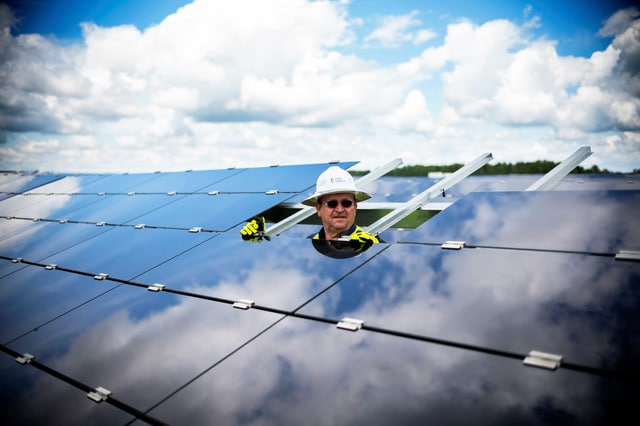Duke Energy and major third-party solar developers in the Carolinas are requesting regulatory approval for a set of plans that they hope will streamline interconnection and accelerate utility-scale solar growth in the states.
If approved, the first proposal would set in motion a plan for clearing the utility’s queue of solar project interconnection requests in North and South Carolina by 2022, and it would also resolve several long-standing formal and informal interconnection disputes.
Likening the queue to “growing pains”, Duke Energy’s spokesman explained that the existing processes for analyzing each solar project interconnection requests one by one worked when fewer projects were being built. “But now there is some frustration with that,” he said.
North Carolina ranks second in the nation for solar power; South Carolina ranks 13th.
Of the 1,500 MW of solar projects in the queue currently, Duke Energy and the major solar developers in the Carolinas determined about 350 MW could come online under the normal course of business and an additional 400 MW in the queue could be helped along, Duke Energy’s spokesman said. If proposal is approved, the rest of the projects in the queue will be withdrawn or revisited at a later date.
To address developers’ frustrations with its interconnection process, Duke Energy worked with solar industry associations to map out a second proposal aimed at rationalizing its interconnection process in 2022, after the existing queue is cleared. If approved, this proposal would let Duke Energy study interconnection requests in clusters that are determined by location. Under this proposal, the utility would also only study projects that are committed to becoming operational within a certain period.
Duke hopes that this new process will eliminate the backlog that was created when “ready” projects were delayed while the utility studied sometimes speculative projects that were in a high spot in the utility interconnection queue. “[This change] should move a lot more projects along faster,” Duke Energy’s spokesman said. “It also builds more certainty into the system because projects will not be lingering.”
This filing, which is sometimes called “queue reform”, also includes a proposal to provide more certainty regarding future interconnection costs for third parties. “[This has] been an ongoing issue. Both sides worked more than a year to hammer out the agreement,” Duke Energy’s spokesman said. “There have been cases where the original interconnection estimate was far different than the final price tag… Certainty helps both sides,” he added.
The proposed agreement that defines the process and timeline for clearing the queue has been submitted to the North Carolina Utilities Commission (NCUC) and the South Carolina Public Service Commission (SCPSC) for approval. Implementation of the queue reform proposal requires NCUC, SCPSC and Federal Energy Regulatory Commission approval.
This content is protected by copyright and may not be reused. If you want to cooperate with us and would like to reuse some of our content, please contact: editors@pv-magazine.com.








By submitting this form you agree to pv magazine using your data for the purposes of publishing your comment.
Your personal data will only be disclosed or otherwise transmitted to third parties for the purposes of spam filtering or if this is necessary for technical maintenance of the website. Any other transfer to third parties will not take place unless this is justified on the basis of applicable data protection regulations or if pv magazine is legally obliged to do so.
You may revoke this consent at any time with effect for the future, in which case your personal data will be deleted immediately. Otherwise, your data will be deleted if pv magazine has processed your request or the purpose of data storage is fulfilled.
Further information on data privacy can be found in our Data Protection Policy.